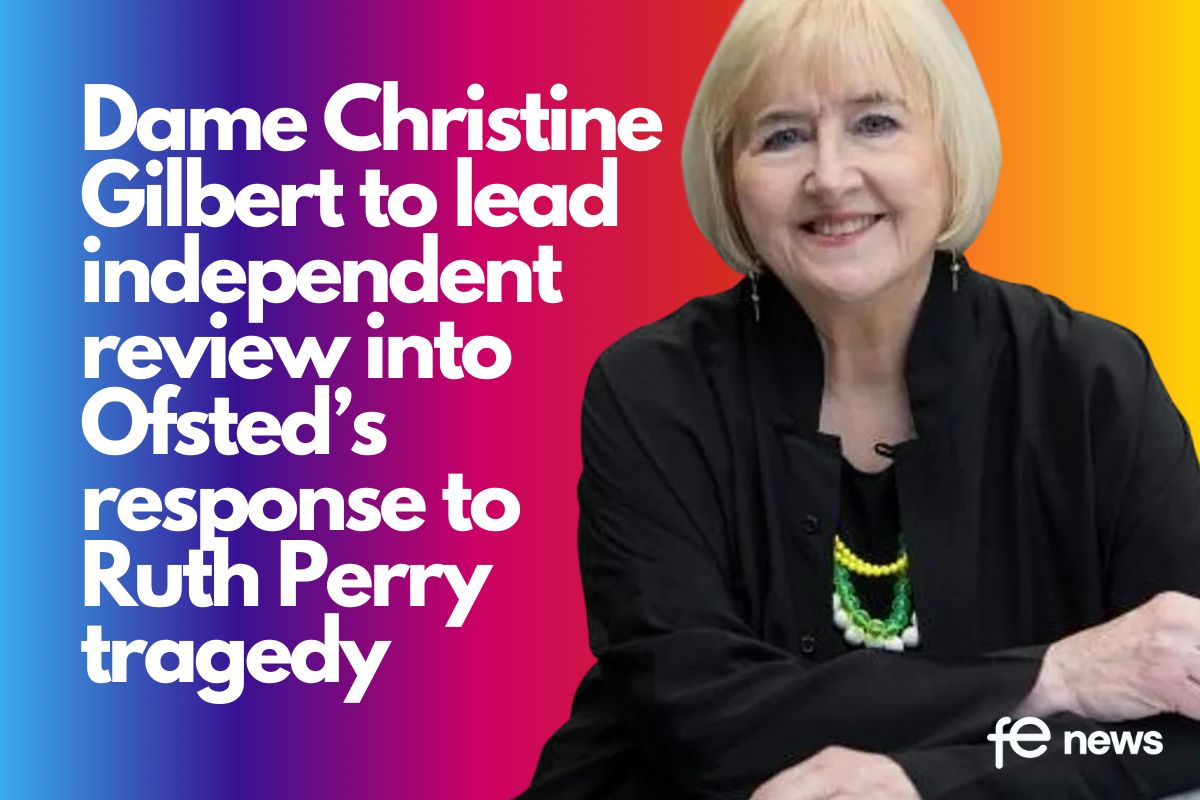Prospero’s books and the official utopias of further education

Since the 1944 Education Act the policies of successive governments towards further education (FE) have (like Prospero in The Tempest) engendered periods of calm and storm.
During this era, governments have created a library of sector pamphlets, reviews and papers that have articulated aspirations for FE.
These visions are a response to their times and, arguably, refashioned FE in response to what had gone before. These texts can be read in various ways. Some cast the sector, the subjects taught and those who study within it, as Caliban, something base and other, having no understanding of what happens inside Colleges of FE or the people who study there. Others seek to imbue the sector with power, to make Caliban king of his own isle.
Drawing on a range of historical documents, this chapter will review some of these plans that pertain to England, the effect, if any, they had, and attempt to draw from them a notion of a utopian ideal for a sector haunted by past official visions for FE, and how they continue to affect those who study and work in the sector.
If Prospero were to conjure FE using pamphlets and reports, published officially as policy guidance, would the FE we see today be recognizable?
This chapter offers an analysis of some of this literature. First, Youth’s Opportunity (Ministry of Education, 1945) and Further Education (Ministry of Education, 1947), from the 1940s, and, second, ‘15–18: Report of the Central Advisory Council for Education – England’ from 1959, more commonly known as the Crowther Report or Crowther. All were utopian schemes and proposals put forward for FE from official sources. They carry an authenticity and credibility due to being official government publications (Scott, 1990); they carry with them their biases of ideology and time, and ‘can be interesting precisely because of the biases they reveal’ (Bryman, 2012: 550). These historical publications contain debates that have continued to obsess FE since 1945, including debates on the justification of compulsory attendance until the age of 18 and the role and purpose of FE. This piece will discuss these, using later government publications and reports regarding or relating to FE, and how utopian ideals written in the 1940s and 1950s were still being debated in 2019.
How FE developed in the early twentieth century
First, we need to understand how FE developed in the early twentieth century. As noted by Bailey (2002) the role FE could have in developing citizens goes back to the early decades of the twentieth century, as did the drive for compulsory attendance in some form of education past statutory school leaving age. The 1918 Education Act made provision for attendance at day continuation schools between the ages of 14 and 18.
However, this was not enacted due to resistance from employers, plus the financial position of the country after World War I (ibid.: 59). This state of affairs largely continued until the passing of the 1944 Education Act legislated for provision of FE, making it the statutory duty of every Local Education Authority (LEA) to provide facilities for full and part-time FE for those over compulsory school age.
The 1944 Act made clear the desire for those aged over 15 to continue to attend education and for FE to provide vocational training, cultural learning and recreational activities. This vision was comprehensively articulated in two Ministry of Education pamphlets published during the immediate post-war period. The first appeared in 1945, entitled Ministry of Education Pamphlet No.3: Youth’s Opportunity: Further Education in County Colleges. This largely concerns compulsory part-time education for all young people, up to the age of 18, who were not already in training. A second pamphlet, published in 1947, was entitled Ministry of Education Pamphlet No.8: Further Education, The Scope and Content of its opportunities under the Education Act, 1944 (Further Education). It covers a broad spectrum of FE, including part-time day release and vocational courses.
Further Education goes into detail about the many considerations needed for the future development of FE, including accommodation and teacher training. It discussed types of institutions, that were to include county, local, regional and technical colleges, some of which would offer a parttime technical education or day release to apprentices. This was an attempt to bring clarity to a sector that had its roots in a range of institutions and traditions, and was a plan for a brighter future.
Although Further Education has greater breadth, it is the earlier Youth’s Opportunity that is of interest here. It describes new county colleges that were to be attended part-time by those who transitioned into employment on leaving school at aged 14 or 15, and were not studying technical subjects at college. Study was to be compulsory until aged 18. Youth’s Opportunity begins by stating that the establishment of these institutions will be ‘one of the most important of the many tasks set before Local Education Authorities’ (Ministry of Education, 1945: 2). Noting the previous failures of attempts at compulsory continual attendance, it states early-on the purpose of bringing in compulsory attendance of some form until the age of 18. It argued that ‘more education would increase the happiness and welfare of the individuals to whom it was given’ and that it ‘would be for the good of the country and the communities that compose it’ (ibid.: 3).
This would be facilitated by delivering a wider curriculum including physical and cultural activities, aiming to teach young people to live a healthy life, learn effectively, use their leisure time productively, gain enjoyment of art, literature and music and an appreciation of their responsibilities to the wider community.
Importantly, it declared the hope that by the age of 18, a young person would have learned what is ‘necessary for good citizenship in a democratic community’, and ‘to have developed their character so that they will (a) be honourable, tolerant and kindly in dealing with their fellows; (b) have an independent and balanced outlook on life’ (ibid.: 31).
Compare this to the current description by the Association ofnColleges (AoC) of the purpose of FE as providing ‘students with valuable skills for the workplace, helping to develop their career opportunities and strengthen the local, regional and national economy’ (AoC, 2019).
While respecting the fact that many colleges deliver well-rounded tutorial provision, along with extra-curricular activities, it is the words and the intent of the two guiding principles: the happiness of the young people who were given the opportunity to develop their skills as workers and citizens of Youth’s Opportunity compared to the instrumentalist view that FE Colleges are places for developing skills for the workplace, that makes the earlier pamphlet appear utopian.
However, utopia can be dystopian for some. County colleges were aimed at low-skilled young people moving into employment without training.
As with many plans for FE aimed at young people who are unemployed or have low attainment, there is a sense that this was to be done to, not with or by consent of, the young people; that FE would educate this cohort of Calibans to be good and happy citizens. Although provision was made so that periods of ‘comparative rigidity … are relieved by periods in which there is the largest possible opportunity for them to choose what they want to do and how they do it’ (Ministry of Education, 1945: 28), they were in effect to be captured, like Caliban, and given little choice or agency. Nonattendance at a county college would have been punishable with a fine and possible imprisonment for the young person, employer or parent (ibid.: 54).
This could make Prospero’s isle Caliban’s dystopia. County colleges, and compulsory attendance until 18, met the same fate as the plans under the 1918 Education Act. Although legislated for, they were never realized. By 1959, Crowther was still arguing for county colleges and for each LEA to be legally required to set them up, to be reaffirmed.
The FE sector of the 1940s was made up of a diverse range of institutions including technical, local and area colleges. Further Education hoped that the county college would be the ‘focal point’ for an FE sector with a range of institutions (Ministry of Education, 1947: 10). This diversity of institutions continued into the 1950s, with Crowther arguing that the term ‘Further Education’ was an ‘imperfect definition’ (Crowther, 1959: 318) covering a range of institutions. The Crowther Report was wide-ranging and it examined the education of young people aged 15 to 18 in relation to
changes in society and industry. Within its scope was secondary education, raising the school leaving age, county colleges, sixth forms, technical education and the wider FE system.
Crowther discusses county colleges, noting their failure to materialize. As no date for implementation was set, the report stated that the intention for county colleges should be reaffirmed, especially as contact was lost with the least skilled as soon as they left school. The curriculum of county colleges was also to be of importance but had shifted in emphasis to ‘an appreciation of the adult world in which young workers suddenly find themselves; guidance for them in working out their problems of human relations and moral standards; development of their physical and aesthetic skills; and continuance of their basic education, with a vocational bias where appropriate’ (ibid.: 195).
Crowther also recommends an ‘alternative road’ (ibid.: 398) of fulltime practical courses for able pupils aged 16 to 18, in place of part-time courses or full-time academic courses in sixth forms. Here we see the FE we have today beginning to emerge. Yet Crowther arguably goes further, with recommendations on broadening the curriculum to ‘come closer to the ideal of what a balanced education should be’, while ‘still serving their vocational purposes’ (ibid.: 369).
The discussions outlined so far relate to two themes: keeping young people in education for longer so that they can become skilled active citizens through a balanced curriculum, and the clarity of purpose of FE in achieving this aim. First, both Youth’s Opportunity and Crowther argue that it is good for society that these young people stay in education, advocating a compulsory system until a young person is 18. Crowther was driven partly by concerns of ‘juvenile delinquency’ and ‘the rejection of traditional authority’ (ibid.: 38); raising the age at which young people would need to stay in education (ibid.: 42), along with county colleges, would be part of maintaining ‘moral standards’ (ibid.: 175). More recently, Colley, Wahlberg and James refer to this as the ‘problem of youth’, where FE is seen to be a response to social issues (2007: 47).
Reports from the 1990s and 2010s make claims to the difficulties in gaining employment and other social issues if a young person does not achieve GCSEs (Kennedy, 1997; Wolf, 2011). Bridging the Gap: New opportunities for 16–18 year olds not in education, employment or training (2007) feared the impact that unskilled and unemployed young people might create for society, citing as possible outcomes offending, drug use and relationship difficulties.
It wasn’t until 2013 that the age of participation was raised, meaning that those who entered FE at 16 would have to stay to until the academic year in which they turned 18. This has had varied success (Widdowson, 2018), with a cohort of young people still remaining NEET (not in education, employment or training).
What all of these reports have in common is the identification of the potential of FE to improve the life chances of a young person. It is telling to counterpoint the language used in the 1940s and 1950s; happiness, wellbeing, citizenship, and a wider or balanced curriculum, to the 1990s and beyond, which sought to manage social problems with a mixture of basic skills and personal and social development qualifications.
Questions about the purpose of FE still torment the sector.
FE was the term used to describe the diversity of institutions that was ‘both stimulating and bewildering’ (Ministry of Education, 1947: 6), with unfulfilled plans being made for an even more complex sector with county colleges at the centre.
Crowther argued that the term Further Education was an ‘imperfect definition’ covering a diverse range of institutions (Crowther, 1959: 318). The post-war FE system was so diverse that Crowther had difficulty establishing how many types of institution there were (Richardson, 2007: 389). This lack of clarity continued into the 1960s, with Peters (1967) taking nine pages to give a definition of FE to use as a basis for an account of the sector, and a further 23 pages to describe all the institutions it covered. This ill-defined purpose continues into the twenty-first century.
In 2005, Realising the Potential: A review of the future of further education colleges (Foster, 2005) argued that the main issue facing FE was that it ‘lacks a clearly recognized and shared core purpose’ (Foster, 2005: vii).
Foster also stated that an FE college must ‘be absolutely clear about its primary purpose’, namely: ‘to improve employability and skills in its local area’ (ibid.: 3) and that this itself will bring about social well-being.
More recently, this was cited and reaffirmed in the independent panel report to the Review of Post-18 Education and Funding (Augar, 2019: 117), indicating that officially the sector should be defined by an output of skills rather than the utopian ideals of earlier plans that also included cultural activities and developing active citizens.
The recommendations from Youth’s Opportunity and Crowther about county colleges were not implemented.
Other later reports such as the ‘damp squib’ (Cantor and Roberts, 1969: 10) Henniker-Heaton Report (1963), the ‘lost opportunity’ (Simmons, 2009) of the Macfarlane Report (1980) and the ‘missed opportunity’ (Nash and Jones, 2015: 37) of the Tomlinson Report (2004) had a similar fate.
These documents, when read, create a lost future for the sector, the ghosts of ideals not met.
They lead us to ask:
- What would the further education sector look like if some of these ideals came to pass?
- What would happen if Prospero were to open these magic books of utopias and see these imagined futures?
It would reveal the optimism of the sector of the 1940s for the young people who study at FE colleges. It would offer a curriculum that allows young people to develop both skills for employment and new interests away from their aspired careers, and values the wider role that FE can have in producing a fair and balanced democratic society.
Most importantly, it would be a sector with a clearly defined purpose: to enhance the happiness and well-being of young people, improving their lives, while giving them training for sustainable employment. I would argue that this imagined sector exists in the work we all do each day, evoking the spirit shown in the 1940s.
Paul Smith
References:
AoC (2019) ‘About colleges’. Online (accessed 24 September 2019).
Augar, P. (2019) Post-18 Review of Education and Funding: Independent Panel Report (the Augar Review). London: Department for Education (DFE). Online (accessed 1 June 2019).
Bailey, B. (2002) ‘Further Education’. In Aldrich, R. (ed.) A Century of Education. Abingdon: Routledge, 54–74.
Bryman, A. (2012) Social Research Methods, 4th ed. Oxford: Oxford University Press.
Cantor, L. and Roberts, I.F. (1969) Further Education in England and Wales. London: Routledge and Kegan Paul.
Colley, H., Wahlberg, M. and James, D. (2007) ‘Improving teaching and learning in FE: A policy history’. in Biesta, G. and James, D. (eds) Improving Learning Cultures in Further Education. London: Routledge 41–59.
Crowther, G. (1959) 15 to 18: A report to the Central Advisory Council for Education (England). 2 vols. London: HMSO.
Foster, A. (2005) Realising the Potential: A Review of the future of further education colleges. Annesley, Notts: DFES Publications. Online (accessed 11 May 2020).
Greenaway, P. (1991) Prospero’s Books. [Film]. United Kingdom: Miramax Films.
Henniker-Heaton, C. (1963) Day Release: The report of a committee set up by the minister of education. Stanmore: DES.
Kennedy, H. (1997) Learning Works: Widening participation in Further Education. Coventry: Further Education Funding Council. Online (accessed 11 May 2020).
Macfarlane, N. (1980) Education for 16–19 Year Olds: A review undertaken for the government and the local authority associations. Stanmore: DES. Ministry of Education (1945) Youth’s Opportunity: Further Education in county colleges. London: HMSO.
Ministry of Education (1947) Further Education: The scope and contents of its opportunities under the Education Act 1944. London: HMSO.
Nash, I. and Jones, S. (2015) ‘The politicians’ tale’. In Hodgson, A. (ed.) The Coming of Age for FE? London: IOE Press, 24–45.
Peters, A.J. (1967) British Further Education. Oxford: Pergamon Press.
Richardson, W. (2007) ‘In search of the further education of young people in post-war England’. Journal of Vocational Education and Training, 59 (3), 385–418. Online (accessed 11 May 2020).
Scott, J. (1990) A Matter of Record: Documentary sources in social research. Cambridge: Polity Press.
Simmons, R. (2009) ‘Further education and the lost opportunity of the Macfarlane Report’. Journal of Further and Higher Education 33 (2), 159–69. Online (accessed 11 May 2020).
Social Exclusion Unit (2007) Bridging the Gap: New opportunities for 16–18 year olds not in education, employment or training. London: HMSO. Online (accessed 11 May 2020).
Tomlinson, M. (2004) 14–19 Curriculum and Qualifications Reform: Final report of the working group on 14–19 reform. Online (accessed 24 September 2019).
UK Government. Education Act 1944. Online (accessed 24 September 2019).
Widdowson, J. (2018) Mending the Gap: Are the needs of 16-18 year olds being met? Online (accessed 24 September 2019).
Wolf, A. (2011) Review of Vocational Education: The Wolf report. Online (accessed 24 September 2019).
An extract from Caliban’s Dance: FE after The Tempest, edited by Maire Daley, Kevin Orr and Joel Petrie. Trentham Books, UCL IOE Press, 2020.
Save 20% on the paperback with code FVCAL at UCL IOE Press.












Responses